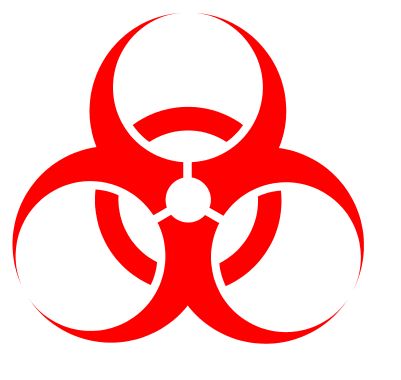Pandemic misinformation

Pandemic misinformation & conspiracies
Conspiratorial thinking has been on the rise on both the left and the right in the US for years (The Atlantic just ran an entire issue on the topic). The coronavirus pandemic provides fertile ground for conspiracies to grow, because 1) there is so much genuine uncertainty 2) people are afraid 3) we lack a trusted central authority to lead us through.
The nature of the scientific process itself is a factor. Many people think of “science” as a kind of encyclopedia of knowledge, or a set of fixed truths. In reality, science is an approach to understanding that often does lead to agreed-upon truths about the natural world, but not instantaneously or in a straight line. When we are confronted with something entirely new—like the SARS-CoV-2 coronavirus and COVID-19, the disease it causes—science professionals have tried-and-true methods for learning. But the answers we get from those tools begin crudely. People who think like scientists understand that the first indication of something is only an arrow pointing toward the truth. It is not the final truth itself. Many experiments, many observations, many efforts each produce an arrow. Some point in entirely the wrong direction. The scientific process is to follow all the arrows in what can be a zigzag line, that ultimately adds up to a path to the truth.
Many people are witnessing this process in real time, for the first time, as they follow every pre-print article and news report about the virus, about therapies, about vaccines. When the accepted scientific consensus changes, people get disillusioned and are prone to reject science as “wrong”. The face mask recommendations are a good example of this.
People who think scientifically should always be ready to change their position in light of new or better information.
Anyway, in terms of pandemic conspiracies and misinformation there is some crazy sh** going around on the internet. Hard-core conspiratorial worldviews are immune to debunking or explanation, so I would not bother to try. However one “meme” has now come to me from two separate friends. It’s a mishmash of fact and fantasy that I found particularly interesting, and worth a response.
The meme arrived to me in two different but evolutionarily related forms, rather like the transcript of a game of Telephone. Both versions wander through long-winded sections peppered with trigger words like “5G” and “as they have made us believe” and “Bill Gates and the World Health Organization” and “constitutional freedoms” and “elites”. Both describe anecdotal, miraculous recoveries (“The next day they woke up as if nothing had happened to them!”), and both end with a plea to the reader to urgently share the information as widely as possible. If you see anything that has these elements, please do not spread it around.
The key identifying feature of the meme is it begins with a reference to the pandemic in Italy, and an accusation that the WHO organized a ban or a conspiracy to NOT do autopsies on COVID victims there. Then it suggests a revolutionary finding has been covered up and should make the pandemic easy to dismiss.
This is the first piece of falsehood, tied up in truth: Many Italian victims were indeed not autopsied, and many were sent to crematoria. But this was not a coverup, it was necessity of the crisis. Too many people died in too short a time to autopsy them, or to keep their bodies around for long.
The most blatant inaccuracy in the piece is only briefly mentioned in one version, emphasized a bit more in the other. The ‘author’ states that COVID is NOT caused by a virus, but rather by bacteria.
If there’s one thing we know for certain in this whole situation, it is that a new coronavirus is the agent of this pandemic. We know the structure of the virus, we know its genetic sequence, we can identify its RNA, we can identify antibodies against its proteins, and we are making vaccines against it.
What intrigues me about this piece, however, is the way it takes several pieces of accurate information and misinterprets them. Bacteria do indeed play a role in viral pneumonias. We know that patients with influenza, which is caused by a different virus, often get hit with an additional infection by bacteria. Bacterial “superinfections” can be the thing that finally kills the patient. But influenza virus was still the initial problem. Bacterial superinfections also can occur in COVID-19 patients and this has important implications for how doctors should care for them in the hospital. This is not a revelation or breakthrough.
Two more important truths are buried and twisted in this meme.
First, about ventilators. Eons ago (I mean, March) one of our national panics was over ventilators. Everyone agreed we didn’t have enough of them, and in fact we were tens of thousands of machines short of what might be needed. The conversation has shifted toward the ongoing shortages of PPE (personal protective equipment) and coronavirus testing. Why? Partly because we flattened the curve, and the worst peak of ICU cases only materialized in the New York City region. As we spread the infections out over time, the number of ventilators needed on any given day gets smaller.
That’s not the only reason you’re not hearing about a ventilator shortage. The other is our medical professionals are learning (remember that scientific method?) the unique clinical features of COVID-19. And one thing they’ve discovered is the lung problems in COVID are different from other viral pneumonias. In particular they’ve found that for some COVID patients, ventilators do more harm than good. Care practices have therefore shifted toward more aggressive efforts to keep patients off ventilators, even when their vital signs seem to indicate they should be ventilated.
The meme distorts this and says “ventilators and ICU were never needed.” Wrong. They are absolutely essential and are saving lives.
Second, about the pathophysiology of COVID. As I described in this blog post, medical professionals are learning that in some patients, the body’s immune response against the virus is more deadly than the virus itself. This has important implications for medical care of COVID-19 patients. In the absence of an effective drug against the virus, using the right anti-inflammatory or immunosuppressive drugs in the right patients at the right time may have a big impact on survival. Likewise, systemic clotting dysfunction (patients getting clots in blood vessels of the lungs and all over the body) is a feature of COVID that doctors can treat directly with anti-clotting drugs.
These things are new discoveries about this new disease. The meme turns this into a coverup or conspiracy, and suggests that if people just took aspirin (“dissolved in lemon juice boiled with honey”) they’d be fine. What a gross simplification of physiology. True, aspirin has anti-clotting properties, and it or drugs like it may be useful in managing COVID-19 patients. But to suggest that a simple home remedy is all we need to save us from the pandemic is wrong, and dangerous. Same with anti-inflammatory drugs. One version cites miraculous benefits of paracetamol, an over-the-counter drug similar to acetaminophen (Tylenol). (The reference to paracetamol is a dead giveaway that this version of the post originated outside the US.)
I understand the desire for a simple solution. I understand how the constant change in our understanding leads people to distrust. But viral infections, the body’s response to them, and the medical care to treat them are exceedingly complex.
Feel free to contact me if you have a question about something you read. Amy@AmyRogers.com
PS I see that by the time I finished writing this post, Facebook had taken down the link I was given.
Amy Rogers, MD, PhD, is a Harvard-educated scientist, novelist, journalist, and educator. Learn more about Amy’s science thriller novels, or download a free ebook on the scientific backstory of SARS-CoV-2 and emerging infections, at AmyRogers.com.
Sign up for my email list
Share this:



0 Comments